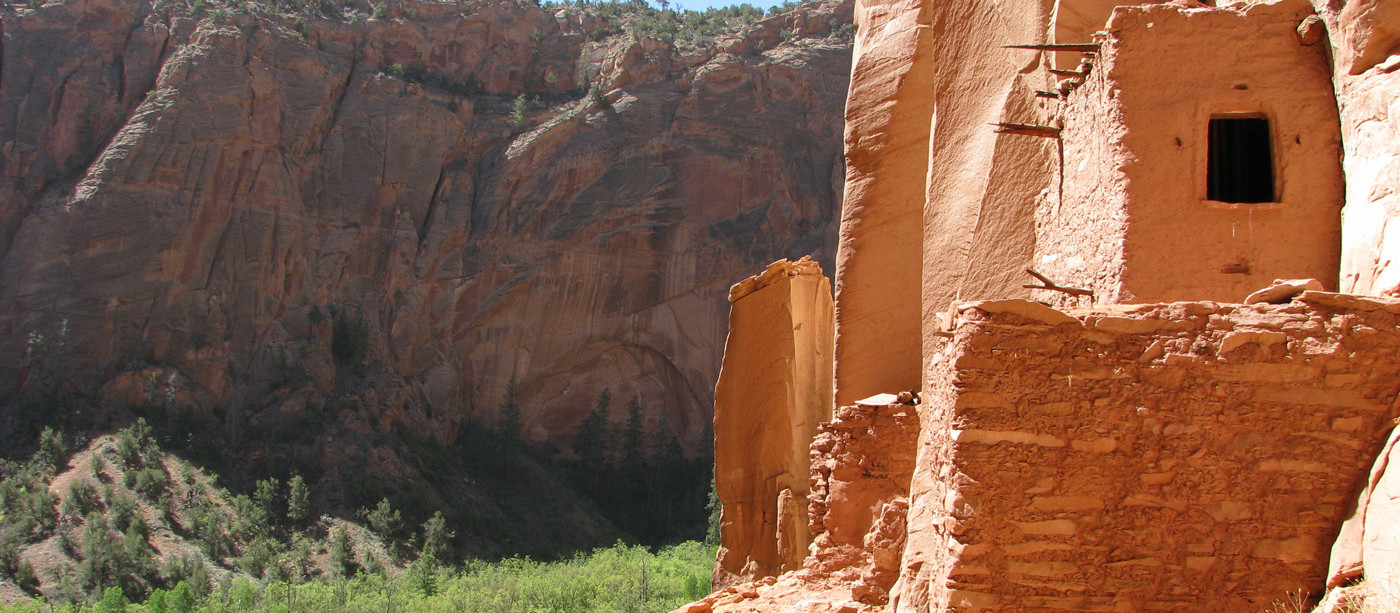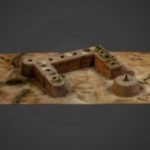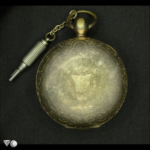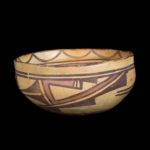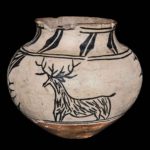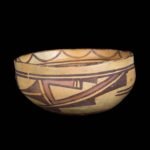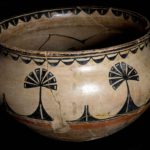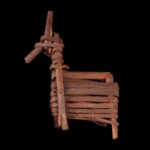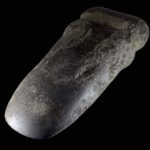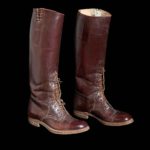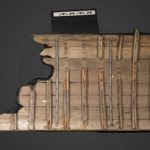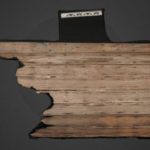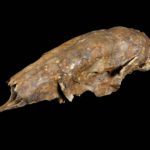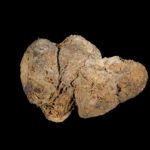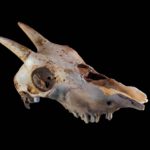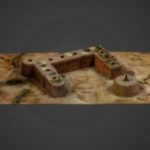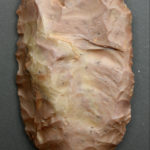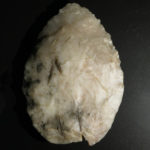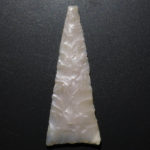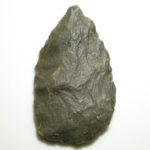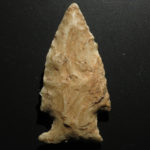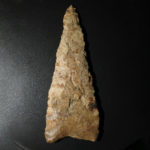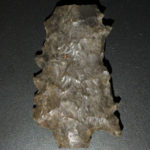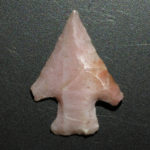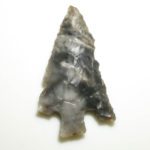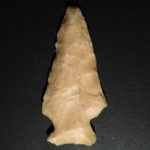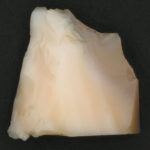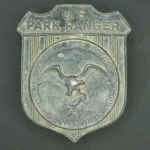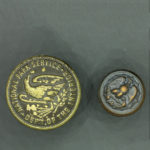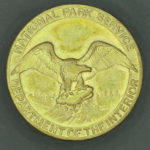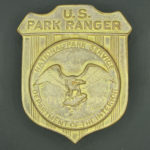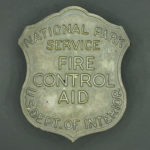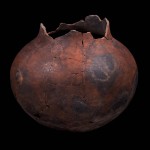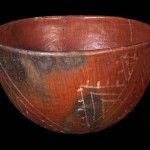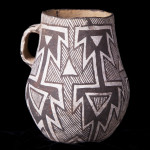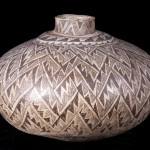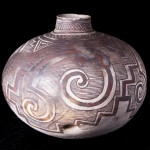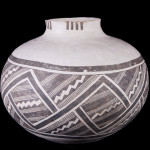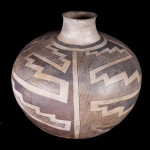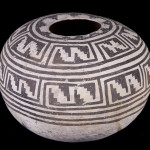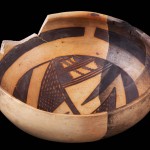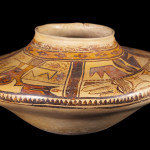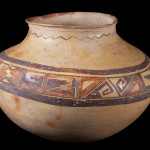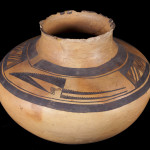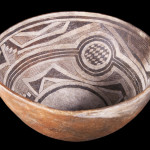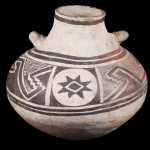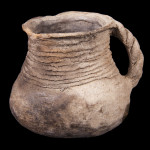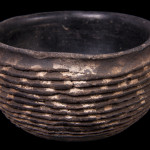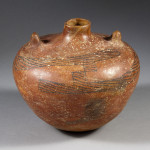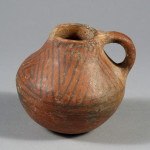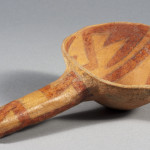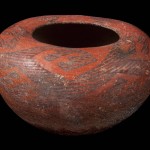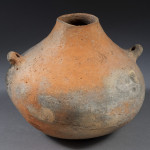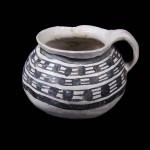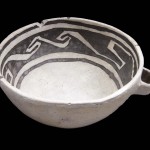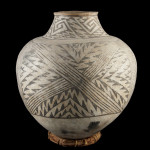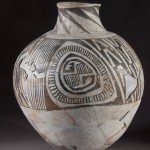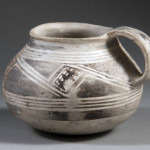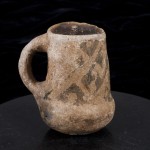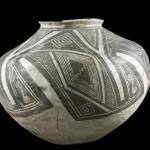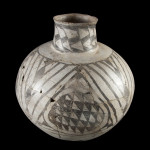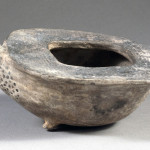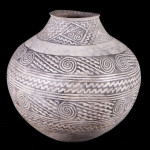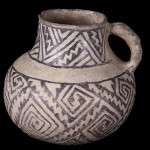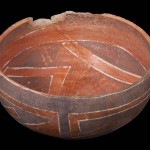The American Southwest Virtual Museum features interactive artifacts in the form of 3D models, reflectance transformation imaging (RTI), and pottery vessel rotations. 3D models allow the user to rotate artifacts fully, viewing all sides; RTI enhances artifact surfaces and allows users to change the lighting to see features otherwise obscured by shadows; and the rotations allow users to turn vessels and zoom in on details.
Explore below or or use the buttons to jump to the interactive features you would like to use.
- 3D Models
- RTI
- Vessel Rotations
3d models
The American Southwest Virtual Museum features a number of 3D models. These were created by stitching together a series of photographs to create a digital interactive model of each.
Emil Haury (1904-1992) was one of the great names in Southwest archaeology. The featured model above is of a replica of a Hohokam (central and southern Arizona) artifact made by Haury and dated “8-20-31” on the back. The mosaic consists of turquoise and coral fixed to the outer surface of a clam shell.
Archaeological Materials (all models open in new window)
- Cochiti Pueblo Dough Bowl
- Hopi Polychrome bowl
- Cochiti/Santo Domingo Pueblo Bowl
- Split-twig Figurine
- Stone Axe
Historic Artifacts (all models open in new window)
- NPS Ranger Boots
- Nellie Powell Boat Interior
- Nellie Powell Boat Exterior
Paleontological Specimens (all models open in new window)
- Ground Sloth Skull
- Ground Sloth Dung
- Harrington’s Mountain Goat Skull
Statues and Replicas (all models open in new window)
- Tusayan Ruin
- Brighty Statue
Reflectance transformation imaging
Several artifacts included in the American Southwest Virtual Museum can be viewed with Reflectance Transformation Imaging, or RTI. This method allows users to view the artifacts under different lighting conditions, and therefore to see features that might otherwise be obscured by shadows cast during the photography process.
Note: If you see an error message below, please copy and paste chrome://settings/system into the Chrome search bar and toggle “Use hardware acceleration when available” to off.
John Wesley Powell’s Watch (GRCA Catalog No. 20836)
Featured above is the gold watch and watch key that belonged to Major John Wesley Powell. Powell led two expeditions down the Colorado River—the first in 1869, and the second in 1871-1872.
Flaked Stone Artifacts
- Folsom Point
- Quartz Biface
- Bull Creek Point
- Biface
- Elko Series Point
- Cottonwood/Bull Creek Biface
- Serrated Gypsum Point
- Eastgate Point
- Rosegate Series Point
- Rosespring Point
- Clovis Point Fragment
NPS Badges and Buttons
- Park Ranger Badge
- Buttons
- NPS Badge
- Park Ranger Badge
- NPS Fire Badge
The artifacts in this gallery are displayed using WebRTIViewer.
Vessel rotations
The American Southwest Virtual Museum also includes ceramic vessel rotations, in which the viewer can turn the vessels and zoom in on details. Available rotations are arranged by ware below.
Kayenta Black-on-white Olla (NAVA Catalog No. 436)
Featured above is a Kayenta Black-on-white olla collected by Byron Cummings in Navajo National Monument in 1909. Design elements include crow’s feet, mosquito bars, interlocking scrolls, spirals, and angular parallel lines.
Alameda Brown Ware
- Verde Brown olla
- Tuzigoot White-on-red bowl
Cibola White Ware
- Puerco Black-on-white pitcher
- Tularosa Black-on-white olla
- Tularosa Black-on-white olla
- Reserve Black-on-white jar
- Reserve Black-on-white olla
- Snowflake Black-on-white seed jar
Hohokam Buff Ware
- Miniature Santa Cruz Red-on-buff jar
Jeddito Yellow Ware
- Bidahochi Polychrome bowl
- Jeddito Black-on-yellow bowl
- Jeddito Black-on-yellow bowl
- Sikyatki Polychrome jar
- Sikyatki Polychrome jar
- Jeddito Black-on-yellow jar
Mimbres Ware
- Mimbres Black-on-white bowl
- Mimbres Black-on-white jar
Mogollon Brown Ware
- Mogollon Brown Ware miniature jar
- McDonald Corrugated miniature bowl
Tsegi Orange Ware
- Dogoszhi-style Tusayan Black-on-red canteen
- Sosi-style Tusayan Black-on-red pitcher
- Tusayan Polychrome ladle
- Tusayan Black-on-red seed bowl
- Tsegi Orange canteen
Tusayan Gray Ware
- Moenkopi Corrugated mug
Tusayan White Ware
- Bidahochi Black-on-white mug or pitcher
- Tusayan Black-on-white bowl
- Flagstaff Black-on-white olla
- Black Mesa Black-on-white olla
- Kayenta Black-on-white jar or mug
- Chaco-style Tusayan Black-on-white cylinder jar
- Kayenta Black-on-white olla
- Black Mesa Black-on-white olla
- Tusayan Black-on-white bird effigy
- Leupp Black-on-white jar
- Walnut Black-on-white pitcher
Winslow Orange Ware
- Chavez Pass Polychrome bowl

